Cap Screws:It resembles a short bolt with a hexagon head with either coarse, fine, or metric thread. Term describes machine bolts and machine screws.
(Fasteners) |

|
Toggle Bolt:When the screw is tightened a firm anchorage is made.
(Fasteners) |

|
Machine Screw:The head is slotted for a screwdriver and may be either round of flat. Typical sizes 4-12.
(Fasteners) |

|
Plow Bolt:No wrench is necessary to hold the bolt head.
(Fasteners) |
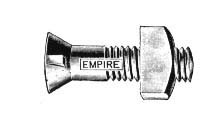
|
Machine Bolt:The head and nut may be square or hexagon shaped.
(Fasteners) |

|
Lag Bolt:The bolt has a square or hex head with a tapered wood screw on the other end. Common sizes 1/4 to 1/2 in diameter, 2" to 12" long. Also called a Lag Screw.
(Fasteners) |

|
Grade 2 Bolt:Soft bolt commonly used for landscape applications and other applications where strength is not important.
(Fasteners) |

|
Carriage Bolts:Never use a washer under the head. Use to bolt wood.
(Fasteners) |

|
Eye Bolt:It has an eye on one end and coarse or fine threads on the other.
(Fasteners) |

|
Grade 5 Bolt:Mildly hardened bolt used commonly in machinery and equipment applications. Three markings on the head.
(Fasteners) |

|
Grade 8 Bolt:Hardened bolt used where high tensile strength is required. 6 markings on the head.
(Fasteners) |

|
Cotter Pin:This prevents the nut from working loose. Also called a Cotter Key.
(Fasteners) |

|
Corrugated Fastener:The size is 1/4 to 1 inch in depth and 2 to 7 corrugations. Used to fasten wood.
(Fasteners) |

|
Box Nail:Roughly speaking, d equals 1/4 inch in length, but this is not constant. The shank is smaller in diameter than the common nail to prevent splitting of the wood. Common sizes 2d to 16d
(Fasteners) |

|
Duplex-Head Nail:The point is sharp, and there are two heads, one above the other, to make removal easy. Common sizes 6d, 8d, 16d.
(Fasteners) |

|
Common Nail:Roughly speaking, d equals 1/4 inch in length, but this is not constant. The shank is larger in diameter than the box nail making the nail less likely to bend. Common sizes 2d – 20d. Sizes larger then 20s are often called spikes.
(Fasteners) |

|
Finish Nail:The sizes range from 2d to 20d. The nail is designed to be counter sunk and the hole filled.
(Fasteners) |

|
Galvanized Nail:Common, box, and finish nails are available for exterior use with a galvanized coating. The coating may be hot dipped (thicker) or electro-plated (EG).
(Fasteners) |

|
Spiral Shank Nails:Designed for the construction and repair of wood pallets. These spiral shank nails are also good for re-nailing wagon beds, trailers.
(Fasteners) |

|
Wire Brad:The size is expressed in wire gauge and ranges from 1/4 to 1 1/2 inches long.
(Fasteners) |
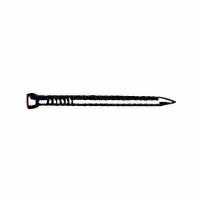
|
Cement Coated Nails:Sizes range from 2d to 16d. Commonly found in a green coating in 8d and 16d ("sinkers").
(Fasteners) |

|
Blue Plaster Board Nail:The range in size is 1 to 1 1/2 inches.
(Fasteners) |

|
Aluminum Roofing Nails:Sizes range from 1 to 1 1/2 inches long.
(Fasteners) |

|
Lead-Head Nails:Lead washer is to prevent oxidation between the head of the nail and the galvanized roofing and also prevents leakage.
(Fasteners) |

|
Galvanized Shingle Nail:The 3d is generally used for shingling.
(Fasteners) |

|
Galvanized Roofing Nail:The head is about 1/2 inch in diameter, and the length ranges from ¾ to 2 inches.
(Fasteners) |

|
Furring Nail:This allows the wire to become a reinforcing agent and the nails hold the plaster to the wall.
(Fasteners) |

|
Wing Nuts:Used where hand tightening (no wrench) is desired such as inspection covers.
(Fasteners) |
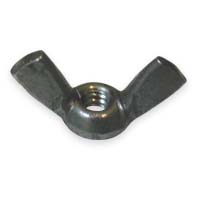
|
Square Nut:Used on farm implements with carriage bolts, machine bolts, stoves bolts and plow bolts.
(Fasteners) |

|
Cap Nut:A nut closed on one side to cover an exposed bolt.
(Fasteners) |
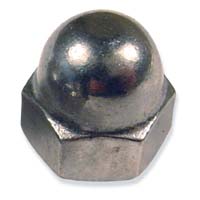
|
Castellated Hex Nut:Used with a cotter pin to prevent loosening or tightening. Top the nut is smaller in diameter than the base.
(Fasteners) |
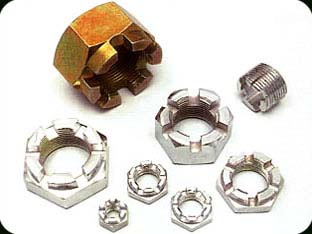
|
Hex Nut:It may have NC, NF, or metric threads.
(Fasteners) |
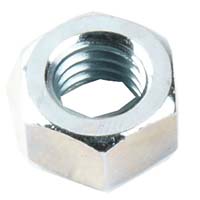
|
Self-Locking Nuts:When tightened on a bolt the scored threads bite into the threads of the bolt preventing it from backing off.
(Fasteners) |

|
Slotted Hex Nut:It differs from the castellated nut in that there is no stepped-in castle-like top.
(Fasteners) |

|
Pop Rivet:A pop rivet tool is required to set the rivet.
(Fasteners) |
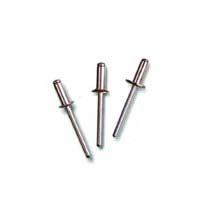
|
Pop Rivet Tool:Tool is adjustable to use the various sizes (diameter) of rivets available.
(Fasteners) |

|
Soft Iron Rivet:The size is based on length and diameter.
(Fasteners) |

|
Rivet Set:A rivet set is a small bar of steel with a hole drilled in the end to receive the rivet, and with a cup-like depression for forming a round head on the rivet.
(Fasteners) |
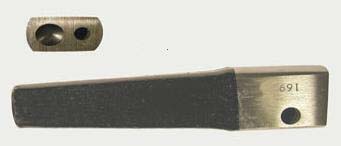
|
Sheet Metal Screws:Head types are flat, round, pan, oval and binding.
(Fasteners) |

|
Screw Hook:Can be screw into wood walls or concrete or masonry when pre-drilled and a plastic or lead anchor is used.
(Fasteners) |
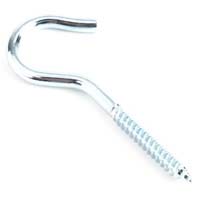
|
Torx Head Screws:The head is similar to the Phillips but having a six point star shaped opening in the center of the head rather than a four point star.
(Fasteners) |

|
Set Screw:When screwed into a set collar the cup point makes an indentation in the shaft preventing the collar from vibrating loose.
(Fasteners) |

|
Self Tapping Screws:Screw has a sharp point with coarse threads that make their own threads when screwed into a pre-drilled hole that is smaller than the diameter of the screw.
(Fasteners) |

|
Self Drilling Screws:No pre-drilling is necessary when using a self drilling screw.
(Fasteners) |

|
Wood Screws:A tapered screw with a round, oval, or flat head. The threaded portion of the screw is tapered with a very coarse thread and cuts its own thread as it is turned into the wood. Shown L-R oval head, round head, flat head Phillips, and flat head slotted.
(Fasteners) |
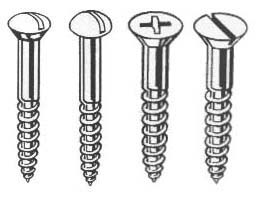
|
Drywall Screws:All Are Phillips Except the Hex Wafer Head. Used to fasten drywall. Bugle shaped flat head.
(Fasteners) |
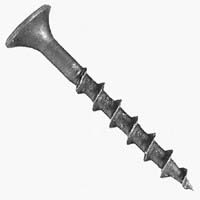
|
Deck Screws:A straight shank wood screw with a bugle head. Commonly made with a Phillips or square drive 2 1/2" of longer. Coated to prevent rusting.
(Fasteners) |
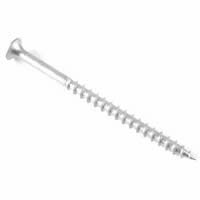
|
Screw Eye:It may be described as a screw with an eye or ring head.
(Fasteners) |
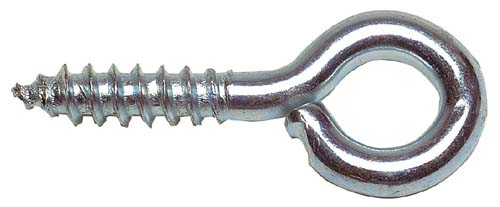
|
Flat Washers:Used to prevent the nut from rubbing and becoming imbedded in the bolted material. Also called a Cut Washer.
(Fasteners) |

|
Fender Washers:The large holes are used for aligning or adjusting for proper fit.
(Fasteners) |

|
Lock Washer:It should not be used on wood.
(Fasteners) |
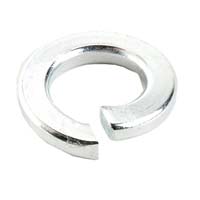
|
Finishing Washer:This is a chrome plated countersunk washer used with oval head wood or metal screws.
(Fasteners) |
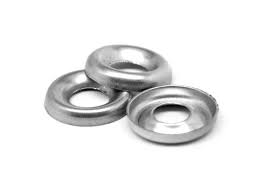
|
Malleable Iron Washer:Used where excess pressure or stress is exerted on wooden structures.
(Fasteners) |
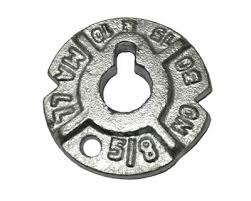
|
Welded Wire Fence:Consists of 16 gauge galvanized wire spot welded rather than woven, and has 2 inch by 3 inch mesh.
(Hardware) |

|
Turn Buckle:Turning the body tightens or loosens both at the same time.
(Hardware) |
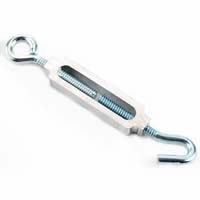
|
Woven Wire Fencing:The roll contains 20 rods of wire ranging from 32 to 47 inches wide.
(Hardware) |
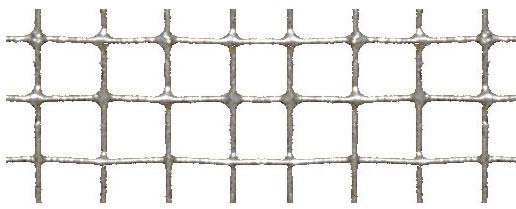
|
Wire Grip:Made of steel or malleable iron. Used to grip fencing wire when tightening
(Hardware) |
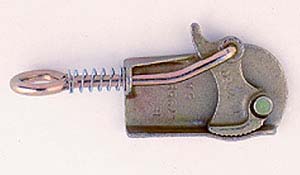
|
T-Post Insulator:The insulator is clipped to the steel post and the wire inserted into the plastic clip, thus preventing grounding of the electrical system.
(Hardware) |

|
Steel Fence Posts:Round steel post with an anchor plate 12 inches from the bottom and comes in 3 to 6 foot lengths.
(Hardware) |

|
Staples:The length is stated in inches and fractions.
(Hardware) |
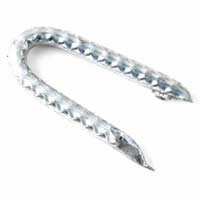
|
Poultry Wire Netting:The rolls are 50 to 150 feet long and from 1 1/4 to 4 feet wide.
(Hardware) |
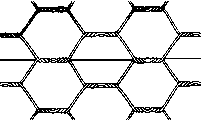
|
Nail On Electric Fence Insulator:Commonly a plastic insulator that nails to a wood post. Insulators hold electric fence conductors about 1" from the post.
(Hardware) |
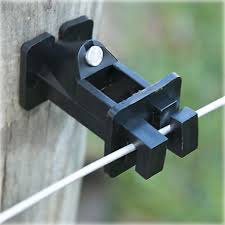
|
Electric Fence Gate Handle:By pulling on the handle, tension can be released on the fence and it can be disconnected allowing entry.
(Hardware) |
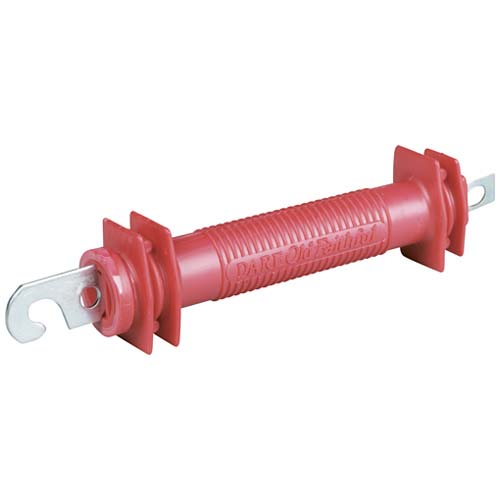
|
Chain Link Fencing:Comes in 36 to 60 inch widths and 50 to 100 foot lengths. Also called Diamond Mesh.
(Hardware) |
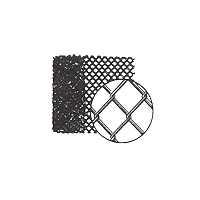
|
Come-A-Long:By working the ratchet handle the cable is tightened and moves the sheave block closer to the ratchet spool.
(Hardware) |

|
Barbed Wire:A spool of wire is 80 rods long.
(Hardware) |
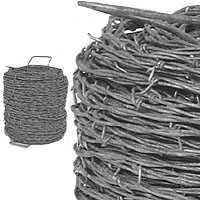
|
T Post:A steel post with an attached plate to help anchor the post. Commonly 5'-8' long.
(Hardware) |
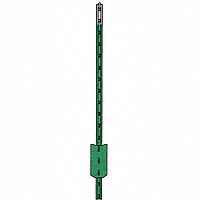
|
Smooth Galvanized Wire:It is made of smooth galvanized steel and is available in a variety of gauges.
(Hardware) |

|
Wire Stretcher:It consists of two double sheave blocks specifically designed with hooks, holding lock, wire clamp and a rope.
(Hardware) |
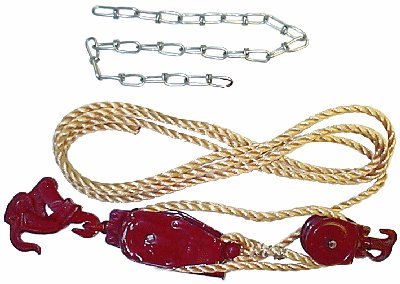
|
Butt Hinge:This hinge is available with fast pin or loose pin and is plain brass or steel or primed with paint.
(Hardware) |

|
Strap Hinge:The size is measured from the hinge pin to the end of one strap.
(Hardware) |

|
Hinge Hasp:One end is like a strap hinge with a slot which folds over an eye or staple to accommodate a padlock.
(Hardware) |
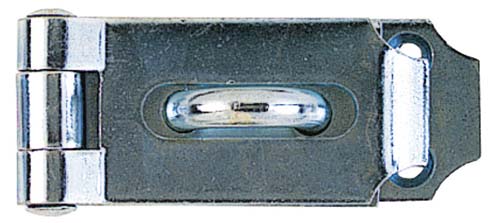
|
Continuous Hinge:Same as the butt hinge except it comes in 8" to 8' lengths and is cut to length with a hacksaw. Also called a Piano hinge
(Hardware) |

|
Barrel Bolt:The other end, a separate piece is an eye which the bolt slides into when locking.
(Hardware) |
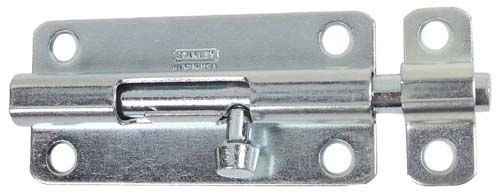
|
"T" Hinge:Size is measured from hinge pin to the end of the strap. Commonly use for gates ("T" fastens to post).
(Hardware) |
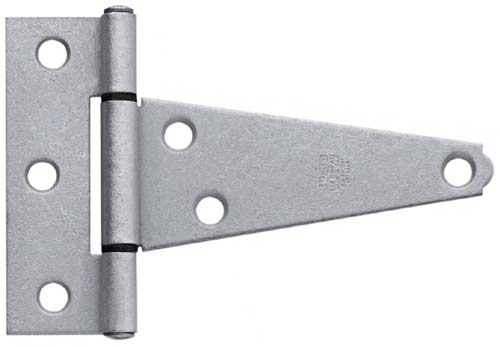
|
Gate Latch:The hook is inserted into the eye screw to latch.
(Hardware) |

|
Torsion Spring:When the spring is wound up it exerts a twisting force.
(Hardware) |
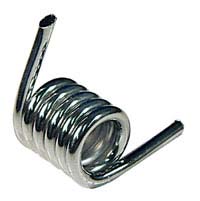
|
Tension Spring:This spring can be extended, but exerts force by extending to pull back to its original length.
(Hardware) |

|
Compression Spring:A compression spring is one that exerts pressure when it is compressed.
(Hardware) |

|














































































